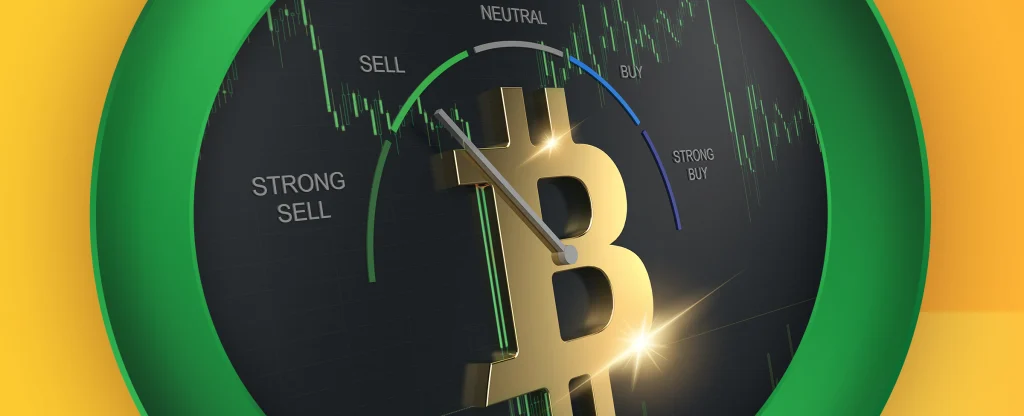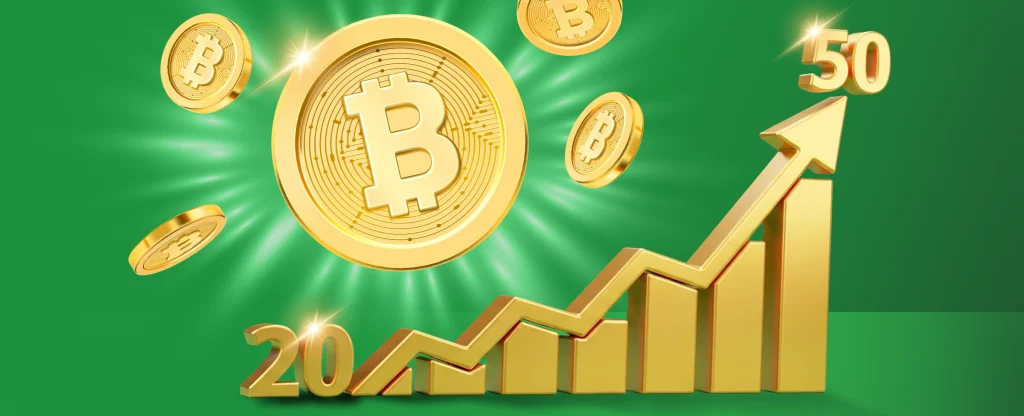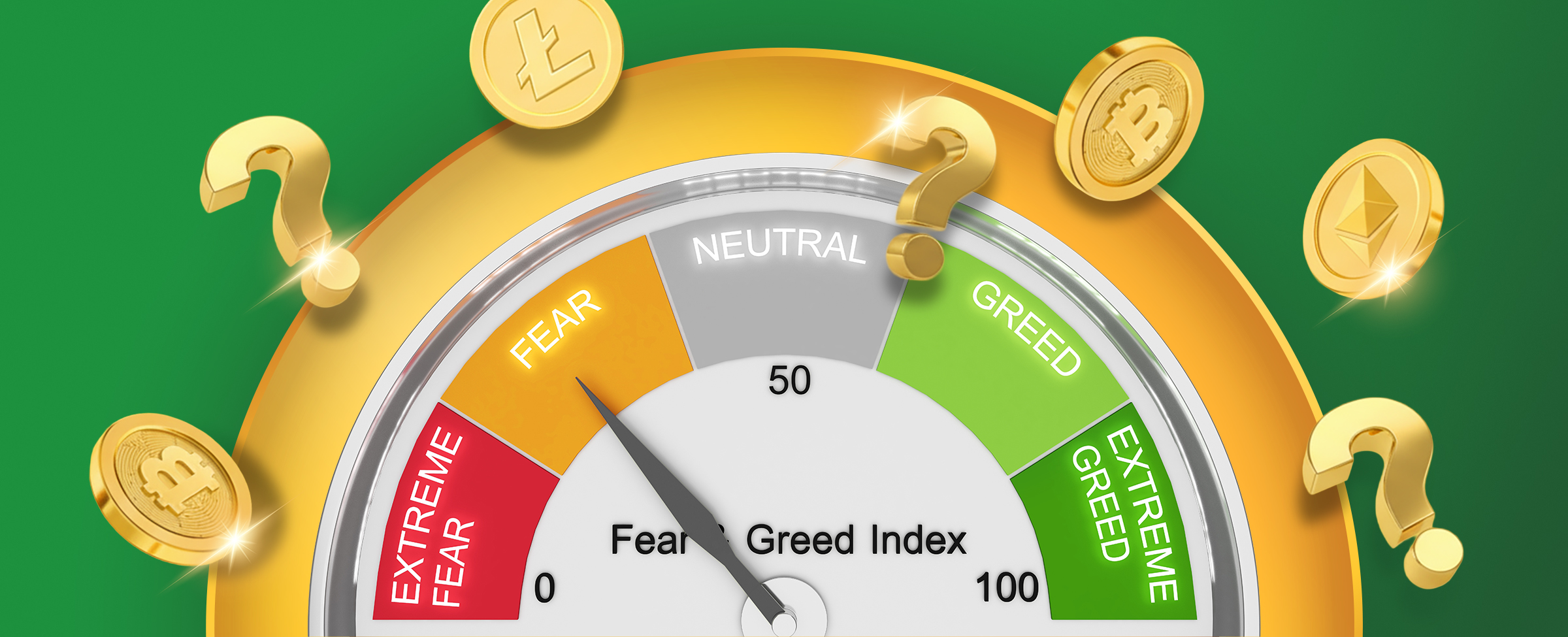Ever noticed how crypto prices can skyrocket one day and crash the next? That’s not just market mechanics, it’s often driven by human emotion. Fear and greed are two of the biggest forces behind what happens in the crypto world and that’s where the Crypto Fear and Greed Index can assist.
Here at Joe Fortune, we are on hand to help provide some insights and intel about this index, in short, it’s a tool that helps you get a quick read on the mood of the market. Are investors panicking and selling off their Bitcoin? Or are they getting greedy, piling into altcoins hoping to strike it rich?
The index turns all that emotional chaos into a simple number between 0 and 100. A low number means fear is in the air, while a high number indicates greed is taking over. Whether you’re new to crypto or a seasoned trader, it’s a useful tool for making smarter decisions.
How it works
The Crypto Fear and Greed Index might seem like magic, but it’s based on real fair dinkum data. Each day, it collects information from a bunch of sources and uses that to calculate the score. So, here’s what goes into it:
- Volatility (25%). Should prices swing wildly, it usually means fear. The index compares current Bitcoin price movements to the past 30 and 90 days.
- Market Momentum and Volume (25%). Are people buying in large amounts? A rise in trading volume (especially during a rally) shows a level of greed.
- Social media (15%). It scans platforms like X and Reddit to see how people are talking about crypto. A sudden spike in chatter or hype can push the index higher.
- Surveys (15%). Occasionally, investor sentiment surveys are used. These ask people how they feel about the market. Are they fearful, do they want to sell, how nervous are they? This all gets factored in.
- Bitcoin Dominance (10%). This looks at how much of the crypto market is made up of Bitcoin. If dominance goes up, it usually means investors are playing it safe and avoiding riskier altcoins.
- Google Trends (10%). Search terms like “Bitcoin crash” or “should I sell crypto” are tracked. If there is a lot of fear-based searches this will drag the score down.
All of this gets pulled together into a daily number which is easy to read and easy to use. If the number is high, people are feeling confident. If it’s low, look out as panic has set in!

Interpreting the fear and greed scale
Now that you know how it works, let’s talk about what the numbers mean. Here’s Joe Fortunes’ quick breakdown of the scale:
- 0–24: Extreme Fear
This is when the market is in panic mode. Prices might have crashed, people are selling off, and no one wants to buy. Ironically, this is often when smart investors start looking to buy cheap.
- 25–49: Fear
The market’s still uneasy, but not in full panic. Many traders sit on the sidelines waiting to see what happens. It could also be a dip before a bigger move.
- 50–74: Greed
People are getting confident. They’re buying more as FOMO kicks in, and prices start to rise. This can lead to bubbles if it continues unchecked.
- 75–100: Extreme Greed
This is when alarm bells should ring. Prices are likely to be too high, people are overconfident, and there’s a risk of a sharp drop. When everyone is greedy, it can pay to be cautious.
The goal here isn’t to predict the future. The index won’t tell you exactly when to buy or sell. But it just gives you some context, which is helpful in a market that moves fast and as mentioned runs on plenty of emotion.
How to use it
Alright that’s the headline jargon so here is how you use this thing…
1. Avoid emotional moves
The biggest trap in crypto is trading based on emotion. The index gives you an outside perspective. Before you FOMO into a new coin or panic sell during a dip, check the index—it might cool your jets.
2. Manage risk
The index helps with risk control. In a greedy market, maybe you reduce your position sizes or set tighter stop-losses. In a fearful one, maybe you look for bargain entries—but still stick to a plan.
3. Buy when others are scared
If the index is deep in the Extreme Fear zone, it might be a sign that the market has overreacted. This could be a good time to buy, especially if you believe in the long-term future of the coin you’re eyeing.
4. Take profits when greed peaks
When the index is flashing Extreme Greed, it could mean the market’s overheated. That doesn’t mean you need to sell everything, but it’s a smart time to lock in some gains or at least prepare for possible volatility.

Breakout strategies using fear and greed index
Some traders take things a step further and use the index as part of a breakout strategy and here’s a quick look at how that works. When markets are fearful, prices often go sideways or drop. But at some point, that fear fades, and when sentiment starts improving and boom! A breakout might be coming.
Let’s say Bitcoin’s been stuck in a tight range, and the Fear and Greed Index has been hovering around 20 (Extreme Fear). If it starts climbing toward 40 or 50, and the price starts pushing above resistance levels, it could be a signal to enter before a rally.
On the flip side, if the index is up at 90 and prices are hitting new highs, it might be time to step back, especially if volume is dropping or momentum indicators are showing weakness.
This kind of strategy works best when paired with other tools like RSI, MACD, or price action patterns. The Fear and Greed Index isn’t a magic wand but it’s a great layer of insight when timing breakouts.
Limitations
As helpful as it is, the Crypto Fear and Greed Index isn’t perfect. Let’s go over some of the things to keep in mind.
It’s a lagging indicator
The index reflects what’s already happened or is currently happening—it doesn’t predict the future. Markets can turn quickly, especially with unexpected news or events.
It’s mostly focused on Bitcoin
The index mainly tracks Bitcoin sentiment, not the whole crypto market. If you’re trading altcoins, their sentiment and movement might not line up with what the index is showing.
It can be manipulated
Social media sentiment can be hyped by influencers, bots, or coordinated efforts. Google searches might spike because of unrelated news. These things can skew the index without reflecting real market behaviour.
It’s just one piece of the puzzle
Don’t build your whole trading strategy around this one tool. Use it with other indicators like technical analysis, on-chain metrics, and fundamentals to make more informed decisions.
Other crypto market indicators
If you want a clearer picture of the crypto market, here are some simple tools to use alongside the Fear and Greed Index:
- RSI
Shows if a coin is overbought or oversold. Good for spotting possible trend changes.
- MACD
Helps track momentum. A cross above the signal line is usually bullish.
- Moving Averages
Tracks long-term trends. A “golden cross” often means a possible uptrend.
- On-Chain Data
Looks at activity on the blockchain, like wallet use and transactions.
- Funding Rates
High rates can mean too much bullish hype—sometimes a sign to be cautious.
- Volume
Strong price moves need strong volume. Low volume = weaker moves.
Top Tip: Using these with the Fear and Greed Index can help you make better, more balanced trading decisions when it comes to what to do with your crypto account.
Final Thoughts
The Crypto Fear and Greed Index is like a mood ring for the crypto world. It won’t give you all the answers, but it’s an incredibly useful shortcut to understanding where sentiment sits at any given moment. In a market driven so heavily by human emotion, that insight is worth its weight in gold… or should that be Bitcoin!
